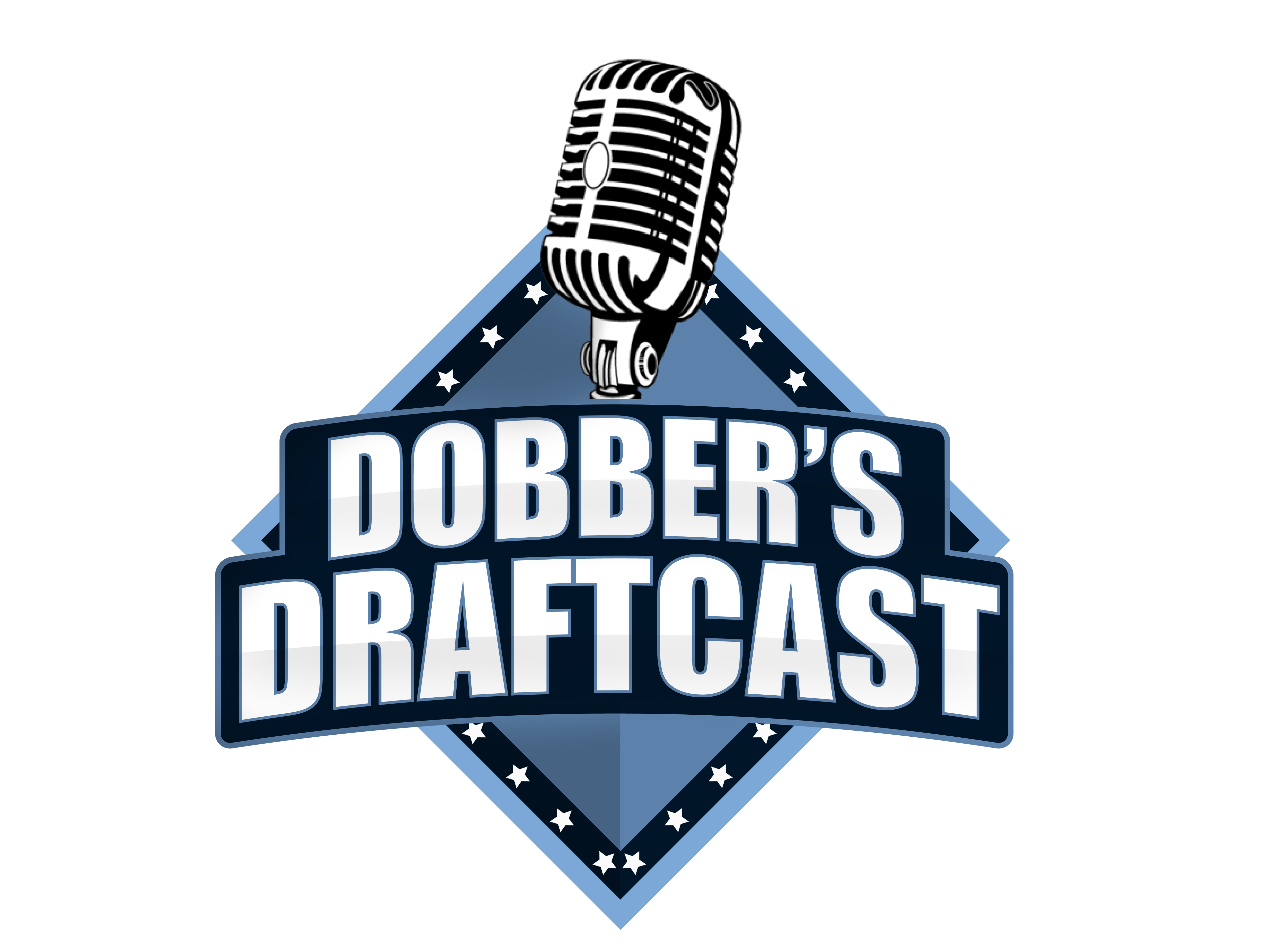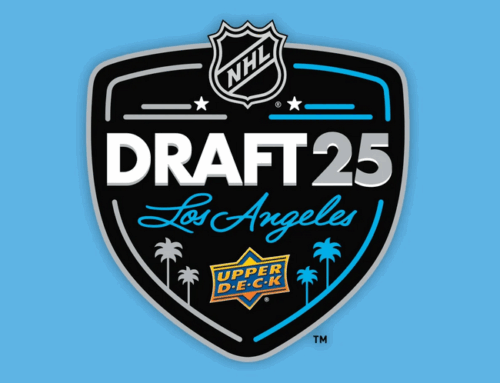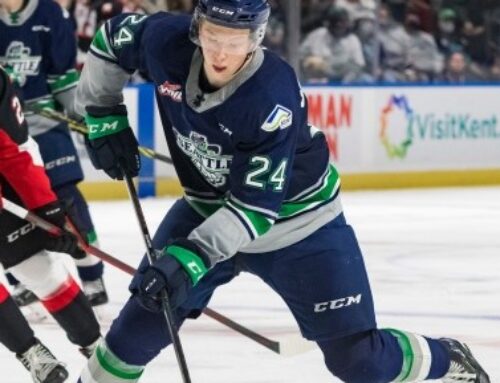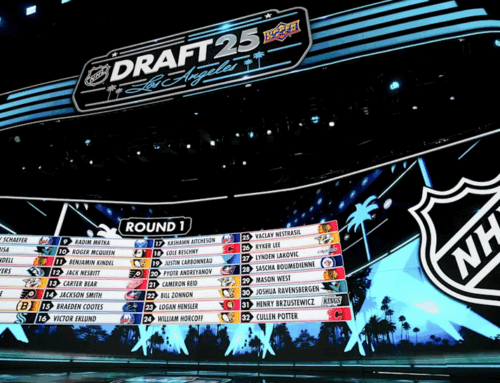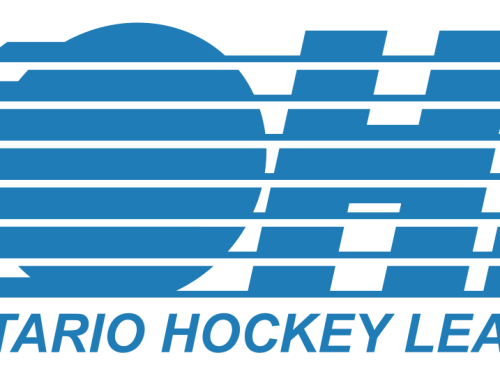Prospect Ramblings: Round Two Winner and Losers – Part 1
Arden McLeod
2025-07-05
The first round of the NHL Entry Draft is where most of the top talent goes. Day two, though, reveals how teams actually draft. Some swing on hidden gems. Others look to raise their floor with safer bets.
Only 30 players under six feet tall were selected in 2025, leaving skill and upside available deep into the draft. With so many teams prioritizing size, did some overlook what their systems really needed?
This breakdown evaluates each team’s draft class from rounds two through seven based on organizational needs, prospect depth, and value relative to public rankings (Dobber, Elite Prospects, and TSN). With few teams targeting sub-six-foot talent, many skilled prospects remained on the board past Round one.
Here’s how a few teams separated themselves from the rest on day two — for better or worse.
***
Winners
Montreal Canadiens
Trading up to select high-ceiling playmaker Alexander Zharovsky at #34 was a bold move that could pay off — the 6-1 winger brings pace and dynamism that could complement Demidov down the line.
Montreal was fortunate not to need a move to grab L.J. Mooney at #113. A cousin of Logan Cooley, Mooney was ranked inside the top 80 by Dobber, EP, and TSN. At times, he flashes game-breaking skill — a boom-or-bust profile with middle-six upside.
They added even more upside at #69 with Hayden Paupanekis, a hulking 6-4 right-shot power forward with fast pace, strong defensive habits, and a rising WHL profile. His potential screams top-nine forward with ability to jump in on both special teams.
Bryce Pickford — a 2024 re-entry — rounds out Montreal’s highlights. He elevated his stock with a near-PPG WHL season and was taken at #81. He brings a high floor and mobility on the back end.
Montreal’s class added size, skill, and long-term potential across multiple positions — a strong return for day two.
***
Dallas Stars
Without a pick in the first round, Dallas leaned into taking home run swings on players who fell compared to their projected rankings. Cameron Schmidt slid to #94, and the Stars did not hesitate to grab the undersized dynamo.
Between Dobber, EP, and TSN, Schmidt’s average pre-draft rank was #24. He’s a play-driving offensive weapon who dominated the WHL with 40 goals and 78 points in 61 games — pointing to top-six potential.
Dallas also found value at #126 in Brandon Gorzynski, ranked inside the top 70 by the same outlets. While not as high-upside as Schmidt, Gorzynski brings size and physicality along with solid two-way tools. He could develop into a useful bottom-six contributor. Landing a player like Schmidt — with the upside to outperform his draft position by two full rounds — gives Dallas a potential impact piece or valuable trade chip. Once again, they didn’t shy away from skill just because it came in a smaller package.
***
Carolina Hurricanes
It is hard to fault Carolina for taking goalies early — especially Russian ones. They have a proven development track record. Using #41 to take Semyon Frolov gives them a big, athletic, skilled goalie with upside and a long runway. With a second pick in the round, they grabbed Charlie Cerrato at #49, a high-floor 20-year-old in the NCAA who should jump to the AHL right away. Then came the classic Carolina swings — Ivan Ryabkin (#62), Kurban Limatov (#67), and Filip Ekberg (#221) — all strong bets with clear upside.
Ryabkin was once a top prospect thanks to dominant D-2 and D-1 campaigns. He lit up Russia’s U18 league at 16 and the MHL at 17, showing dual-threat scoring from centre and wing. His draft year, split between a mediocre MHL stint and a decent USHL showing, hurt his stock — but if he rebounds, this is the draft steal.
Limatov brings immediate value at #67. Ranked #43 on average by Dobber, EP, and TSN, he’s a smart, mobile 6-4 defenseman tracking positively in the MHL. He’ll take time to develop in Russia’s pro leagues, but he has the toolkit of a future third-pairing NHLer. Then there’s Ekberg. After 19 games in Sweden’s Allsvenskan in his D-1 year, he came to North America and racked up 16 goals and 29 assists in 53 OHL games. Dobber and EP ranked him #68 and #76. TSN left him off their board. Getting him at #221 is a borderline theft — if he sticks, Carolina grabbed a middle-six forward for free.
***
Losers
Seattle Kraken
Management took five swings on day two, and only drafted one forward — with their last pick. That’s not just prioritizing defensemen, that’s ignoring forwards. Seattle drafted a potential gem
in Blake Fiddler at #36, who was ranked as a first-round pick by Dobber and Elite Prospects. Fiddler has second pairing upside, combining fluid skating, and a responsible transition
game. The three players Seattle picked after Fiddler, Will Reynolds (#68), Maxim Agafonov (#134), Karl Annborn (#205) fall into a similar mold – mobile, intelligent, and mature
defenseman.
Seattle’s system already has many young defensemen, Ryker Evans, Lukas Dragicevic, and Ty Nelson who are trending well. What their pipeline lacks is scoring upside, more high-ceiling forwards could
bolster their top 6 core. Seattle went off the board with their early 3rd round pick, taking Reynolds, unranked by Dobber, Elite Prospects and TSN. Higher ranked forwards like Schmidt, Mooney, and even Cooper Simpson (taken #79 by BOS) available, a lot of offensive potential was left on the table –especially for a team that needs it.
Toronto Maple Leafs
The Leafs never want to be pushed around again — at least that’s what their 2025 draft class would have you think. Toronto picked six times on day two, and every player selected was over
6-1, averaging out at 6-3. Five of the six picks were forwards, yet their offensive production was almost nonexistent. The six towering players combined for just 122 points in 339 games. What was lost with all that added size? Any chance at offensive impact. Easton Cowan currently headlines the Leafs’ pipeline, followed by 23-year-old defenseman Noah Villeneuve — and the
offense gets even harder to come by after that. It’s a system that leans on high-floor role players and lacks the top-end skill to complement the team’s stars.
https://dobberprospects.com/player/easton-cowan/
Toronto passed on several high-ceiling options like Schmidt, Ryabkin, and Adam Benak (#102 by MIN), all of whom bring explosive pace and legitimate offensive upside that could translate to the NHL. They also ignored defensemen with more dynamic tools, including Quinn Beauchesne (#148 PIT) and William Sharpe (#216 LAK), both known for their playmaking and skating.
An urgent organizational need is to support the core — Knies, Matthews, Nylander — with prospects who can impact games offensively. Instead, this draft class — headlined by second-
round pick Tinus Luc Koblar, a centre in Sweden’s J20 league with under 0.5 PPG — reinforces a profile already saturated within the Leafs’ system: big-bodied, low-ceiling forwards who project to play similar roles. At best, this class adds size, grit, and forechecking. But it doesn’t move the needle where it’s needed — scoring depth.
Wrapping up…
Today these picks won’t make an impact, but they will eventually. The mid and late rounds of the NHL Entry Draft builds future depth, future trade chips, and sometimes future stars. Teams
that passed on upside on day two may come to regret it when they’re giving up real assets for the kind of offensive player their rival drafted in the 3rd round.


